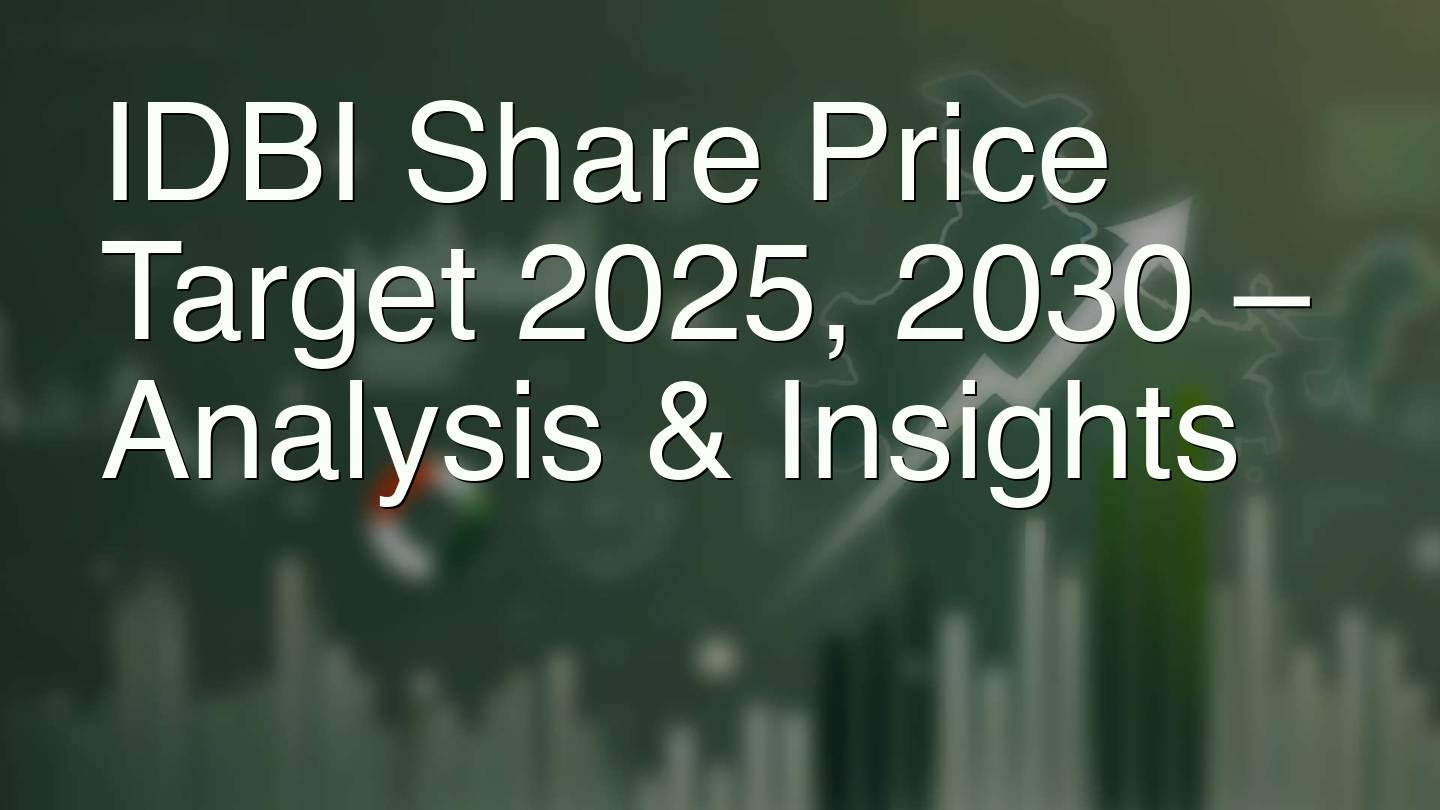Looking ahead at the future of IDBI Bank’s share price, expert analyses indicate a promising trajectory. With various predictive models in place, understanding how these changes come about and the factors influencing them is crucial for investors aiming to maximize their returns.
Understanding IDBI Bank’s Market Influences
IDBI Bank has made significant impacts in the banking sector, with its business model encompassing corporate, wholesale, and retail banking. The bank’s treasury operations and its robust handling of investment portfolios add to its financial strength, directly influencing its stock performance. As IDBI continues to expand its services, understanding the market forces at play is essential for predicting its future share price.
Key Drivers of Share Price
The upward or downward movement of IDBI’s share price can be attributed to several factors, both internal and external. Internally, the bank’s ability to innovate in their retail banking services and adapt to competitive banking solutions plays a critical role. Externally, the economic environment, government policies, and technological advancements influence investor sentiment and market dynamics.
Forecast for 2025
In the near future, by 2025, IDBI Bank is expected to experience steady growth in its share price. Analysts predict a gradual increase, driven by enhanced banking services and strategic partnerships. Below is an estimation of IDBI share prices based on current market trends:
| Month | Projected Open | Projected Close | Change (%) |
|---|---|---|---|
| January 2025 | 98.02 | 95.41 | -2.73 |
| April 2025 | 97.27 | 99.60 | 2.34 |
| October 2025 | 106.30 | 112.95 | 5.89 |
Prospects for 2030
By 2030, IDBI Bank is anticipated to reach new heights with an increased share price reflecting its consolidated performance and strategic growth initiatives. The integration of technology and expansion into new financial services are expected to be major contributors to this growth. Economic forecasts suggest a positive outlook for IDBI as it capitalizes on emerging opportunities in the Indian financial sector.
Long-term Growth Factors
Several factors contribute to IDBI’s long-term growth. First, the bank’s investment in digital banking solutions offers enhanced customer experiences, critical in today’s digital age. The bank’s ability to manage risks effectively while expanding its credit portfolio also sustains its growth trajectory. Additionally, IDBI’s strategic lending to emerging sectors ensures it remains a competitive player in the banking industry.
Market Challenges and Opportunities
While IDBI faces the common challenges present in the banking sector, such as regulatory changes and market volatility, the opportunities outweigh these hurdles. Strategic collaborations with fintech companies and government initiatives on financial inclusion present IDBI with golden opportunities to expand its market base and diversify its services.
- Regulatory Changes: Adapting to new banking regulations, ensuring compliance while maintaining growth momentum.
- Technological Advances: Leveraging cutting-edge technology to improve banking operations and customer satisfaction.
- Expansion into Rural Markets: Tapping into regions with lower banking penetration could enhance IDBI’s market share.
Conclusion
For investors looking at IDBI as a potential investment opportunity, the forecast is optimistic. With its strategic initiatives, robust growth plans, and keen focus on innovation, IDBI is well-positioned to cater to evolving market demands. While challenges remain in the volatile financial landscape, IDBI’s consistent performance and adaptability provide a solid foundation for future growth.
Investing in IDBI Bank shares requires careful market analysis and a long-term perspective. While the road to 2030 is filled with predictions and forecasts, keeping abreast with the latest developments in IDBI and the broader banking sector is essential. Strap in, because IDBI’s journey seems set on a promising path!



Leave a Reply